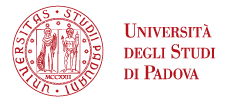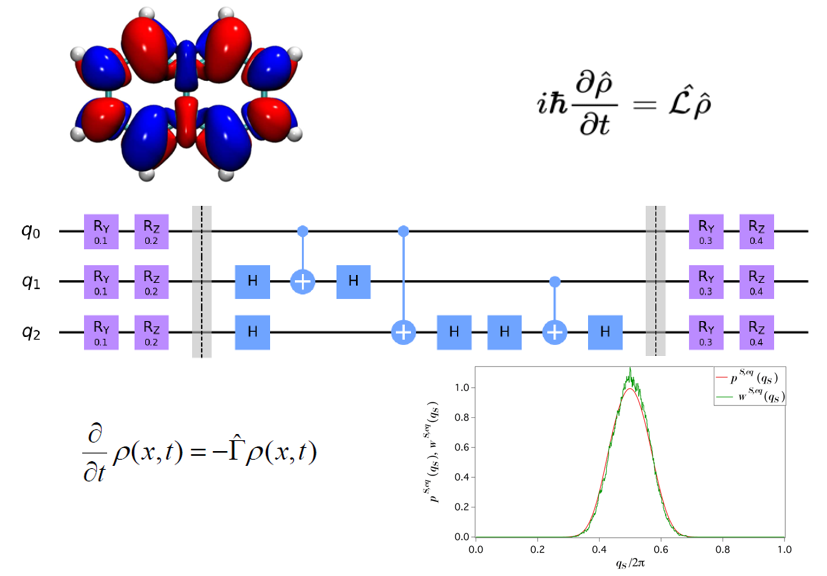Quantum Computing for Chemistry
INVOLVED PADUAQTECH RESEARCHERS:
DESCRIPTION OF THE RESEARCH LINE:
We are developing and applying algorithms for Quantum Computing applied to different aspects of Theoretical and Computational Chemistry
-Electronic structure calculations we are testing and exploiting QC algorithms for electronic structures from literature, such as the Variational Quantum Eigensolver with physical based and hardware based trial wavefunctions. We are also actively involved in developing such approaches, as well as their integration with multiscale models (e.g. QM/MM or QM/Continuum) [1] to simulate phenomena such as molecular nanoplasmonics and photonanocatalysis.
-Simulation of electronic dynamics Starting from electronic structure calculations, these simulations exploit approaches such as the numerical solution of the explicit time-dependent Schroedinger equation [2] for electronic and vibronic states to provide understanding of complex quantum mechanical processes such as those at the basis of optical ultrafast spectroscopic investigations. Such investigations themselves are also being rephrasing in the language of Molecular Logic and alternative models of Quantum Computing [3].
-Classical Molecular Dynamics simulations together with stochastic modelling, are intensively used by various groups at the Department of Chemical Sciences to unravel the function and dynamics of complex systems like biomolecules or macromolecules.Based on the long experience in the stochastic modelling of molecular processes and spectroscopic observables, we are exploring the strong formal analogies between the Fokker-Plank equation for the time evolution of the probability distribution over selected molecular degrees of freedom with the Schrödinger equation of quantum dynamics.
-Noise in quantum circuits and open system dynamics. Chemists think about molecules as quantum systems continuously interacting with their environment and, because of these interactions, decoherence and dissipation bring an important contribution to molecular dynamics, both nuclear and electronic. Such an understanding of quantum dynamics is markedly different from the idealized model of quantum computer as an isolated system undergoing strictly unitary dynamics. For example, expertise on the statistical description of quantum states and dynamics at the Department of Chemical Sciences [4] may be employed to harness the noise of quantum circuits for the simulation of non unitary quantum dynamics including relaxation and decoherence.
-Training of students and young researchers with a background in Chemistry within this research lines is a key activity as well.
REFERENCES:
1. Mennucci, B.; Corni, S. Multiscale Modelling of Photoinduced Processes in Composite Systems. Nat. Rev. Chem. 2019, 3, 315–330.
2. Castaldo, D.; Rosa, M. Corni, S. Quantum optimal control with quantum computers: A hybrid algorithm featuring machine learning optimization. Phys. Rev. A 2021, 103, 022613.
3. Fresch, B.; Cipolloni, M.; Yan, T.-M.; Collini, E.; Levine, R. D.; Remacle, F., Parallel and Multivalued Logic by the Two-Dimensional Photon-Echo Response of a Rhodamine-DNA Complex. J. Phys. Chem. Lett. 2015, 6, 1714-1718.
4. Fresch, B.; Moro, G. J., Typical response of quantum pure states. Eur. Phys. J. B 2013, 86, 233.







